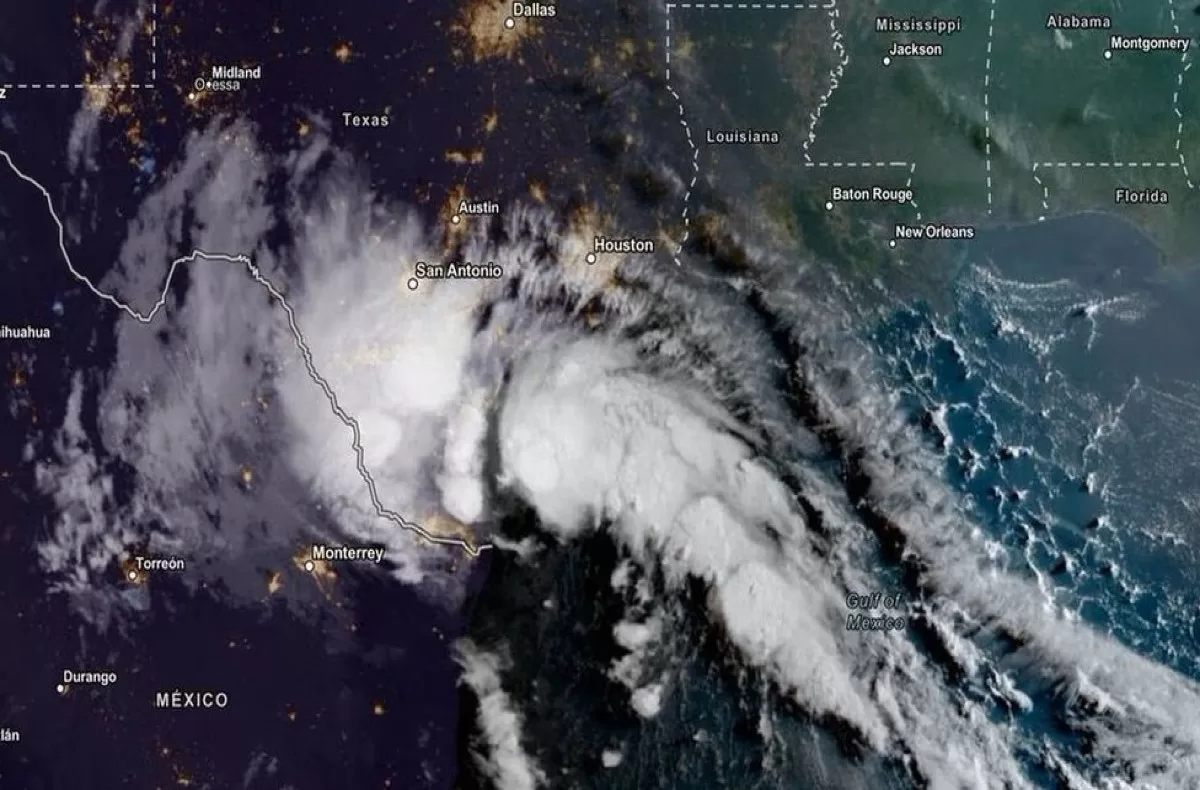Tropical Storm Harold made landfall in South Texas, and is spreading heavy rain and gusty winds inland into northern Mexico. The center of Harold pushed ashore along Padre Island, Texas, at 10 a.m. CDT. Tuesday.
Harold was the ninth storm of the 2023 Atlantic hurricane season, over three weeks ahead of the average season pace, according to the National Hurricane Center. It was also the fourth tropical storm to form since this past weekend, following Emily, Franklin and Gert. It was the fastest time on record four Atlantic named storms formed, according to tropical scientist Phil Klotzbach.
Here’s where Harold is right now: The image below shows the current radar and satellite for the storm. You can see bands of rain near and to the west of the center pushing inland over parts of South Texas and northeast Mexico.
Harold has already dumped over 3 inches of rain, produced wind gusts up to 60 mph, and produced coastal flooding from 2 to 3 feet above normal tides in the Corpus Christi metro area.
Harold will continue to weaken as it moves inland over South Texas into northern Mexico. It will then quickly degenerate into a remnant by Tuesday night or Wednesday morning, as the graphic below shows.
Rainfall from Harold will last through Tuesday night across South Texas and northern Mexico. Some areas could pick up 2 to 4 inches of rainfall, with locally higher amounts up to 6 inches possible.
That could lead to local flash flooding. Over northern Mexico, generally north of Monterrey, locally heavier amounts could lead to dangerous landslides in mountainous terrain.
Most of Texas remains in drought following a summer that has featured more domes of high pressure than raindrops in the Lone Star State. While Deep South Texas will see soaking rain, much of the rest of the state, as well as areas of Louisiana, may see little to no drought-relieving rain from Harold, including the Houston metro area.
Otherwise, some storm surge flooding of 3 feet or less is possible from Sargent to the Mexico border, and tropical storm-force winds capable of some tree damage and a few power outages are possible in the tropical storm warned area.
Harold replaced Harvey when that notorious hurricane name was retired from future use in the six-year rotation of Atlantic names for tropical storms and hurricanes.
Coincidentally, Harold’s landfall location was just 70 miles farther south along the Texas coast than Harvey’s first landfall in August 2017. And it was almost six years to the date after Harvey first crashed ashore.

